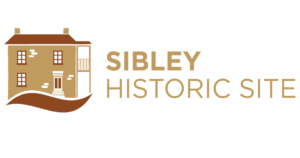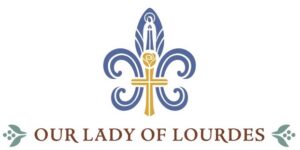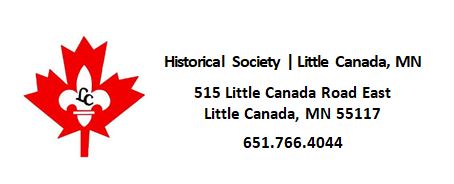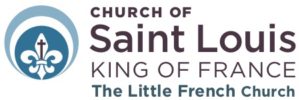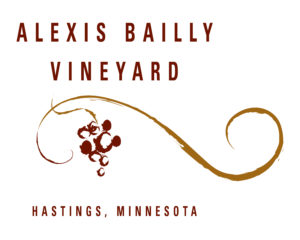Places of Learning & Commerce Natural Places & Forts
1. Alliance Française 7. Grand Portage/Fort Charlotte
2. Perrault School 8. Voyageurs National Park
3. Merci Train Boxcar 9. Father Hennepin Bluff Park
4. Lac qui Parle Renville Fur Post 10. St. Anthony Falls
5. White Oak Fur Post 11. Red River Oxcart Trails
6. Gervais Grist Mill 12. Fort Perrot/Fort Beauharnois
Homesteads Places of Faith & Culture
13. Alexander Faribault House 18. Church of St. Louis, King of France
14. Hypolite Dupuis House 19. St. Peter’s Church
15. Pierre Bottineau House 20. Our Lady of Lourdes Church, Minneapolis
16. Jean-Baptiste Faribault House 21. St. John’s Cemetery
17. Henry Hastings Sibley House 22. Our Lady of Victory Chapel
Places of Faith & Culture (cont’d)
23. Pierre Bottineau Gravesite
24. Shrine of the Blessed Virgin
Minnesota Historical Interactive Map
1357 Sibley Memorial Highway, Mendota Heights, Minnesota
Part of the Sibley Historic Site, this house was built in 1840 of Platteville limestone and sandstone. It was built for Frenchspeaking fur trader and business owner Jean-Baptiste Faribault. By July 1853, Faribault’s house was converted for use as a hotel during the 1850s and 1860s. Later, the building was repurposed as a warehouse for onions by French-Canadian Esdras Bernier.
http://www.mnhs.org/sibley/learn/jean-baptiste-faribault
https://en.wikipedia.org/wiki/Jean-Baptiste_Faribault
https://www.dar.org/national-society/historic-sites-and-properties/fairbault-house
1357 Sibley Memorial Highway, Mendota Heights, Minnesota
The Hypolite Dupuis House is located at the Sibley Historic Site. Dupuis was a clerk/fur trader who worked for the American Fur Company and managed the company store. He was married to Angelique Renville, a Métis who is the ancestor of many who belong to the Mendota Mdewakanton Dakota Tribal Community.
http://www.mnhs.org/sibley/learn/hypolite-dupuis
http://sibley-friends.org/Hdupuis.htm
1405 Sibley Memorial Highway, Mendota Heights, Minnesota
Built in 1853 by French Canadians, it is the oldest Catholic church building in Minnesota, and was restored in 1978.
Several of its notable hand-crafted wood interior features are reproductions of 19th and early 20th century elements from other Minnesota churches, including the baptismal font and Stations of the Cross. The organ was purchased in 1906.
https://en.wikipedia.org/wiki/Saint_Peter%27s_Church_(Mendota,_Minnesota)
1357 Sibley Memorial Highway, Mendota Heights, Minnesota
The Sibley House is located at the Sibley Historic Site at the place “Where the Waters Meet,” a translation for the
word “Mdote” or “Bdote.” Pierre Le Sueur was here in 1683 and named the present-day Minnesota River, “St. Pierre.” This site was the location of the American Fur Company headquarters. The Sibley House, Dupuis House and the Faribault House are
located at this site, and are a testament to the early French-speaking fur traders
who were instrumental in the formation of the modern state of Minnesota.
Home of the White Oak Fur Post and Learning Center and annual White Oak Rendezvous and History Festival. The site was a regional fur trading post for the North West Company in the 18th century. The site also holds re-enactments for 15th century Willensstark Company mercenaries who at one time fought for the French.
http://whiteoakhistoricalsociety.org/historical-library/fur-trade/white-oak-fur-post/
A gift from France to Minnesota in appreciation for American support during World War II, this boxcar was part of the French Gratitude Train of 1949. Each of the 48 states received a boxcar filled with gifts. This car contained 31 crates of paintings, engravings, prints, books, posters, china, glass, fine fabric, lace, dolls, toys, and lamps that were distributed to museums, schools and libraries.
http://mercitrain.org/Minnesota/
https://www.waymarking.com/waymarks/WMA1NW_French_Merci_Boxcar_Gratitude_Train_Little_Falls_MN
This was the overland transportation route for the French-Canadian fur trade in the 19th century and is today the site of Grand Portage State Park. It contains a 120-foot waterfall on the Pigeon River, which marks the border between the U.S. and Canada. Early Native inhabitants developed a footpath known as Kitchi Onigaming in the Ojibwe language, a name translated by French explorers as "the Great Carrying Place.”
http://bwcawild.com/MiscellaneousPage/Portages/The-Grand-Portage.html
https://en.wikipedia.org/wiki/Grand_Portage_National_Monument
Pierre Bottineau’s remains are here. He died in 1895 and was buried in the Cyr
Cemetery west of Red Lake Falls. In 1978 his remains, and those of four members of his family, were moved to St. Joseph’s Cemetery by the Red Lake County Historical Society. Bottineau encouraged many French Canadians from St. Paul and the Red River Colony in Winnipeg, Manitoba, to settle in Red Lake Falls.
This shrine was built by Fr. Ernest Bossus, pastor of St. Dorothy's Catholic Church from 1926 to 1935. The parish’s French-Canadian roots date to 1880, when several dozen French-Canadian families resided in the area. Fr. Bossus built the Marian shrine after u n d e r g o i n g successful cataract surgery. The shrine is across from Huot State Park.
https://www.waymarking.com/waymarks/WMF4K8_Blessed_Virgin_Mary_Shrine_Huot_MN
12400 James Deane Parkway, Maple Grove, Minnesota
Built in 1854 as the first frame house in Maple Grove by fur trader Pierre Bottineau, the Greek Revival style pine home is “balloon framed,” meaning the wall studs are of continuous pieces of dimensional lumber running all the way from the floor to the roof peak. The house was home to several of the 23 children from Bottineau’s two marriages. In 1908, the house was converted into a granary. Today, the restored house is an interpretive site that depicts the lives of the early settlers.
https://www.threeriversparks.org/location/historic-pierre-bottineau-house
Classes were taught here for 68 years from 1880 to 1948. The schoolhouse is located in Red Lake County and has been restored as an interpretive center for early American schools. Many
French Canadians settled in the area in the 1870s and 1880s.
http://www.redlakecountyhistory.org/tour/tour.htm#5
1 Lourdes Place, Minneapolis, Minnesota
The church site is where Fr. Louis Hennepin first viewed St. Anthony Falls. It is the oldest continually operated church in Minneapolis and the first Catholic parish in the United States to be named for the Marian Lourdes shrine in France. It was originally built in the late 1850s by the First Universalist Society, sold to the Catholic French-Canadian community in 1877 and modified to a French Provincial style used in Quebec.
https://en.wikipedia.org/wiki/Our_Lady_of_Lourdes_Catholic_Church_(Minneapolis,_Minnesota)
Site of an American Fur Company trading post managed by Joseph Renville, a French-speaking Métis who was a descendant of the Rainville family from Quebec. Lac qui Parle Presbyterian Mission was founded here in
June 1835, which provided religious education and medical care for Renville, his family, and local Dakota. Inside the mission building located at the site is a replica of Renville’s fur trading post.
506 Cedar Street, Saint Paul, Minnesota
Named for King Louis IX of 13th century France, the church was designed in 1907 by Emannuel Masqueray, the same architect as the Cathedral of St. Paul. Its stained glass windows depict French, French-Canadian and American history. The parish is operated by the Marist religious order. The church’s statuary includes a pieta.
http://www.stlouiskingoffrance.org/
St. Catherine University, 2004 Randolph Avenue, Saint Paul, Minnesota
Listed on the National Register of Historic Places, the chapel was created in 1924 and is based on the design of a medieval French cathedral. The original College was founded by the Sisters of St. Joseph of Carondelet, a French r e l i g i o u s o r d e r. T h e c h a p e l e n t r a n c e features friezes depicting Christ, the Twelve Apostles, and the University's patron saint, St. Catherine of Alexandria.
https://en.wikipedia.org/wiki/Derham_Hall_and_Our_Lady_of_Victory_Chapel
https://www.stkate.edu/about/visit-campus/our-lady-of-victory-chapel
12 1st Avenue Northeast, Faribault, Minnesota
Built in 1853, it was the first wood-frame house constructed in Faribault by French-Canadian fur trader Alexander Faribault in a Greek Revival style with nine bedrooms. Besides functioning as a house, it also served as a civic center, polling place, and a church. Faribault prospered from a
trading venture at the confluence of the Straight River and the Cannon River with Dakota people, and owned a sawmill and a flour mill.
https://en.wikipedia.org/wiki/Alexander_Faribault_House
http://rchistory.org/alexander-faribault-house/
Located one block east of Saint John's Church off Highway 35E, this cemetery is the second oldest cemetery in Minnesota. The oldest section (near the front gate) contains the graves of over one hundred members of pioneer families, including
many people of French-Canadian heritage. The land for the cemetery was donated in 1851 by French-Canadian Abraham Lambert who, along with his wife and children, is buried in the cemetery.
https://www.findagrave.com/cemetery/83337/saint-johns-cemetery
2750 Edgerton Street, Little Canada, Minnesota
The first flour and grain mill in Minnesota was built in 1844 by St. Paul’s first
carpenter, French-Canadian Charles Bazille of Montreal. Owned by French-Canadian Benjamin Gervais, it was located in present-day Gervais Mill Park in Little Canada.
https://www.hmdb.org/m.asp?m=45528
A global organization chapter promoting French language and cultures through language classes, cultural programs, social events and information resources is located at the Joly Family Center for International Understanding, 227 Colfax Avenue North, Minneapolis.
A major waterfall located in
Minneapolis on the Upper Mississippi River, it was first named the Chutes de Saint Antoine in Father Louis Hennepin’s 1680 journal and is part of the Mississippi National River and Recreation Area. It was a leading tourist attraction for French traders and early European settlers, and a special place for the Dakota people. This once significant source of water power sustained wool, cotton, and flour mills, as well as sawmill and paper mill trades.
Pembina, North Dakota to St. Paul, Minnesota
This network of 19th century oxcart routes connected the Red River Colony in Canada with the Mississippi River at Mendota and St. Paul. The trails provided French Canadians and the Métis people a way to transport furs and supplies without reliance on the monopolistic Hudson’s Bay Company trade developed by and along the trails connecting Fort Garry with St. Paul.
This commerce contributed to the settlement of Minnesota and North Dakota, and accelerated the settlement of Western Canada.
This 5.5-acre park rests on a wooded bluff overlooking the Mississippi River and St. Anthony Falls. It connects to many parks on both sides of the river through an extensive trail system. It is named for French-speaking Catholic Francisean priest Fr. Louis Hennepin who visited the region in 1680 and kept a diary of his journeys and his discovery and naming o fSt. Anthony Falls.
420 Southeast Main Street, Minneapolis, Minnesota
https://www.minneapolisparks.org/parks__destinations/parks__lakes/father_hennepin_bluff_park/
The lake was first named in a 1703 map of New France made by Guillaume Delisle at the request of King Louis XIV. The lake was named for Jean Pepin who settled on its shores in the late 1600s after exploring the Great Lakes from Boucherville.
Nicolas Perrot erected the first of several fur trade posts, Fort Saint Antoine, in 1686. In 1727 René Boucher de La Perrière and Michel Guignas built Fort Beauharnois on the lake. In the 19th century the lake was used to transport lumber downstream to mills at Winona and St. Louis.
https://en.wikipedia.org/wiki/Fort_Beauharnois
For additional sites to include in this map, please send the information to foundation@fahfminn.org for consideration and include the name of the historical site, an informational blurb and links regarding the site.

